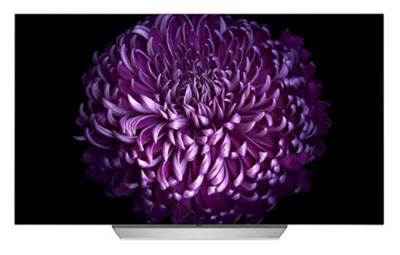Korean news site DDaily posted an interesting article that states that LG Display is looking to replace the fluorescent OLED emitter used in its OLED TVs with a blue TADF emitter.

Following the introduction into LG's OLED TV production process, LG hopes to also use TADF materials in its small and medium OLED production. The report is a bit confusing, but it seems that LGD also aims to use its WOLED display in small and medium display formats - even for VR applications.
A blue TADF emitter will offer a much higher efficiency compared to the current fluorescent emitters. TADF materials are also easily made soluble - which means that it'll prove an easier material to transition to ink-jet printing.
The main question is of course - will TADF material makers be ready with a commercial-grade blue TADF emitter next year? A few week ago Cynora announced that it achieved a new performance record with its latest blue emitter material - which the company believes is the best overall performance of a high-efficiency blue emitter ever. In April 2017 Cynora's CMO told us that the company is on track to commercialize a blue TADF emitter by the end of 2017.
Besides Cynora, TADF is being developed by several other companies. Japan-based Kyulux was established to commercialize Prof. Adachi's HyperFluoresence TADF technology, and it also aims to bring TADF emitters to the market by 2018. Unlike Cynora, Kyulux is not focused on blue only, it is also developing red, green and yellow emitters.
Idemitsu Kosan also considers TADF as one of the key OLED technologies and intends to focus on TADF in the future (although Idemitsu's actual TADF plans are not clear yet). UDC has been recently awarded a patent on TADF materials, although the company says that TADF is not in its focus. The EU launched two TADF related collaborative research projects to focus on TADF emitters, Project HyperOLED and the 2015 project Phebe.
Comments
Will they finally improve the lifespan of blue pixels?
Doesn't make sense to me. As OLED use that kodak patent of white OLED back lit per pixel with colour filters over the top to make wrgb.
So they shouldn't have any issues with the blue colour subpixels. I guess what they are considering is using tadf emiters behind the Color filters? Or are they going to a true RGB OLED screen like a Samsung AMOLED??
OLEDs are made from organic light-emitting materials that emit light when electricity is applied. OLED displays are emissive - and do not require any backlight or filtering systems that are used in LCDs. As a result, OLEDs can be made flexible and transparent while providing the best images possible.
So I'm unsure where you get by saying otherwise. There is still a lifespan issue with oled pertaining to light in the blue wavelength. There are countless articles that speak to this. However just as plasma tv's had burn in issues in the beginning, as the application of that tech got older the problem became less prominent.
LED displays are the ones you'll run into this issue most often but they can easily be repaired (not to confuse with led backlit lcd which do not suffer from this as they use white diode) OLED would require entire replacement.
There are no color filters, each pixel suposedly is able to reproducew pretty much the emtire color gamut the human eye can see, albeit yellows still do not look correct to me on any OLED or LCD tv
LG's W-OLED TVs actually do use color filters as all the OLED sub-pixels are "white".
I thought they could not make a white oled so they use blue+yellow stack to create white? Then they have a color filter very much NOT the same as lcd.....
Yes, the white OLED is actually made by both blue and yellow OLED emitters.


how can one translate the report?